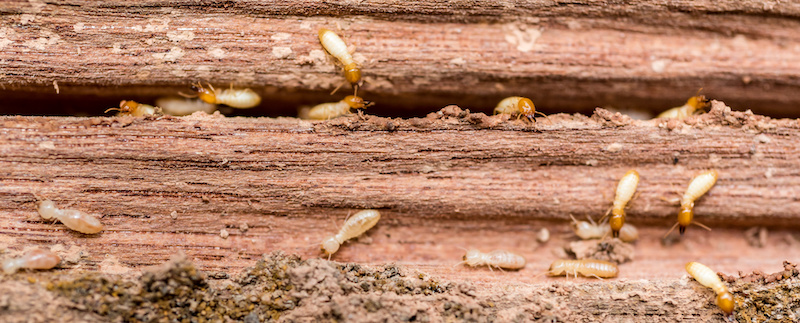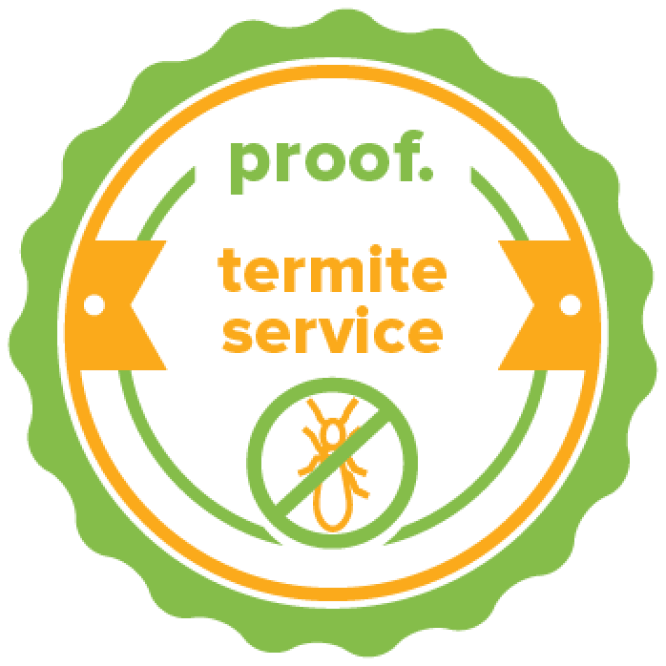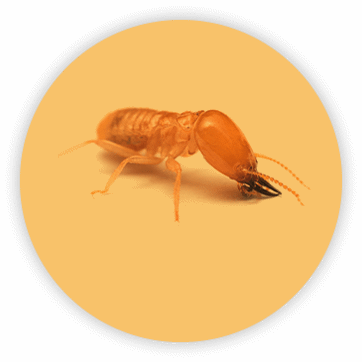termites
live better.
live pest free.
our four-step termite control plan
Our four-step termite control plan provides year-round protection for your home.
Coverage for this plan includes subterranean termites.
1. free inspection of your home
The first step in your custom termite treatment plan is for our termite expert and certified Trelona® specialist, will
perform a thorough inspection of your home for termite activity. There is no charge for the inspection.
Primary items that will be checked during this inspection include:
- basement and/or crawlspace
- foundation and home perimeter
- other common risk areas
- any areas with suspected activity
don’t let termites destroy
your property.
get a free
termite inspection!
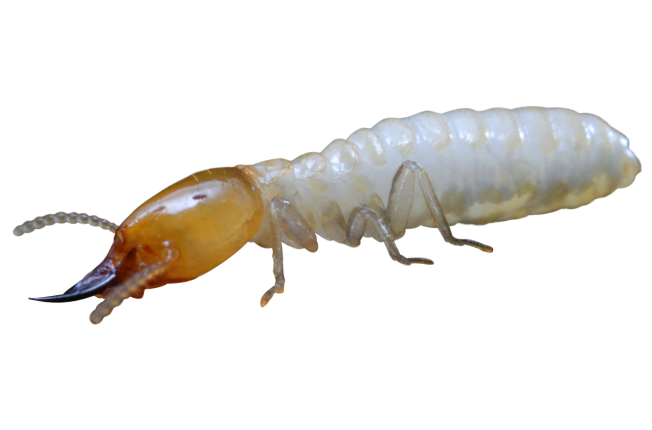
2. develop custom treatment plan
Once the inspection is complete, we will prepare a custom treatment plan for your home. This treatment plan will be designed to target any existing termite issues, plus prevent future ones. proof. uses the most effective products to combat termites – proof. uses the most effective products to combat termites – with equipment constructed right here in the USA!
We do this to ensure our customers receive the best protection from these destroying pests.
Your termite treatment plan will include:
- A customized digital diagram showing the termite issues identified during
the inspection - The steps we recommend to treat any existing issues and prevent
recurring problems
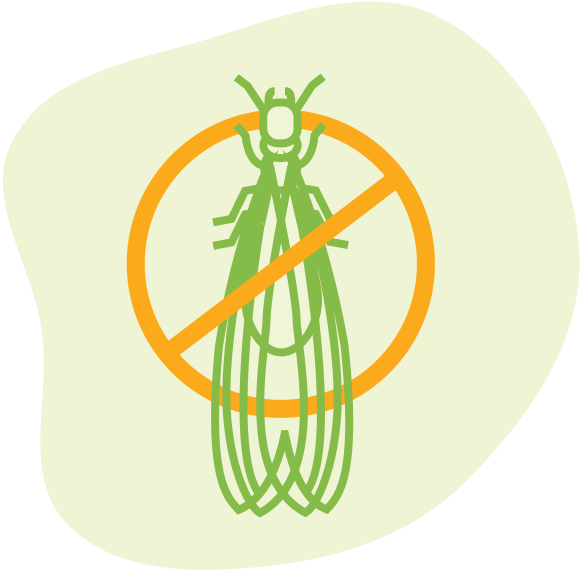
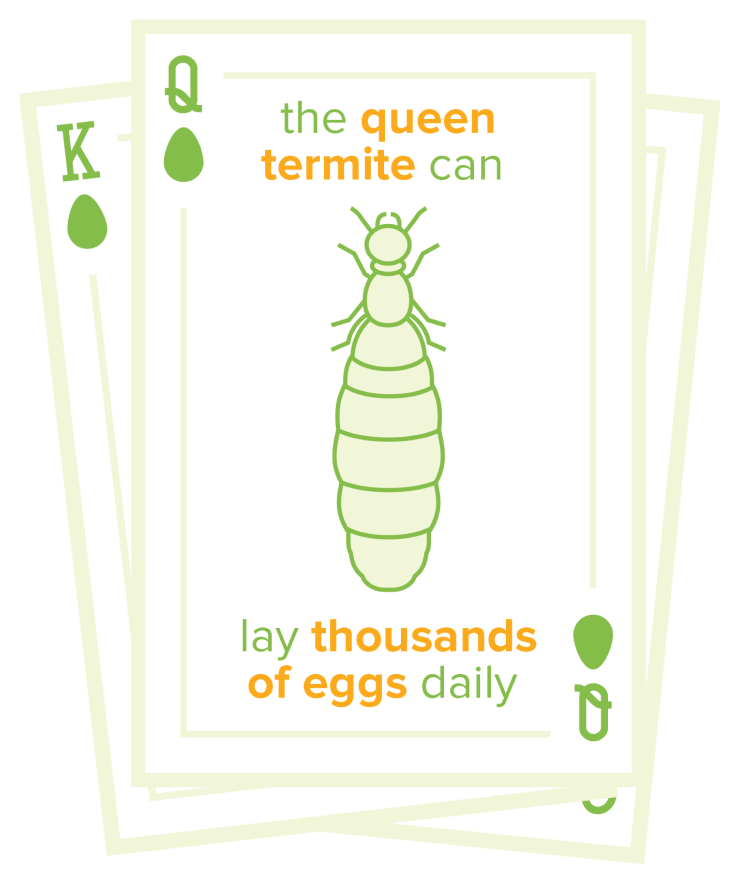
3. active protection
To eliminate any existing termite colonies and protect your home from future termite infestations, a series of top-of-the line Trelona® bait stations with active bait are be placed around your home’s perimeter. These stations are strategically placed
around your home to intercept foraging termites. The Trelona® system begins working as soon as it’s put in the ground.
When termites find the bait and take it back to the colony, it will spread throughout the colony’s population and eliminate them.
Simply put, the Trelona® system uses termites’ very nature — their constant foraging in search of food — against them.
4. annual inspections
To maintain your home’s protection and make sure the treatment plan is working correctly, we will perform an annual inspection
of both the interior and exterior of your home and adjust the treatment plan if necessary. The Trelona® system kept up by a Certified Trelona Specialist™, protects your home 24/7/365, year after year. If you see termites or signs of activity at any time during the year, simply let us know and we will come out to inspect and treat!
Now that you can rest easy knowing your home is protected by the best termite defense team – you can also have peace of mind knowing that the original Trelona® system is the only pest control product ever to earn the Presidential Green Chemistry Challenge Award, presented by the U.S. Environmental Protection Agency.
termite treatment options
Liquid Termiticides: One of the most prevalent termite control methods, liquid termiticides are applied to the soil around the foundation of the building or directly into termite-infested areas. The termiticide forms a barrier that repels or kills termites upon contact, protecting the structure from further infestation.
Bait Systems: Bait systems offer a strategic approach to termite control by strategically positioning the products in termite hotspots throughout your property. These stations house enticing baits that termites consume and then share with their colony, eventually eliminating them. Not only are bait systems effective, but they also provide a less intrusive solution for long-term termite control.
Wood Treatments: Wood treatments are primarily utilized for preventive measures or localized infestations. If termites have infested a wooden structure, like furniture or framing, we’ll apply the liquid wood treatment directly onto the infestation sites, creating a protective barrier against termites.
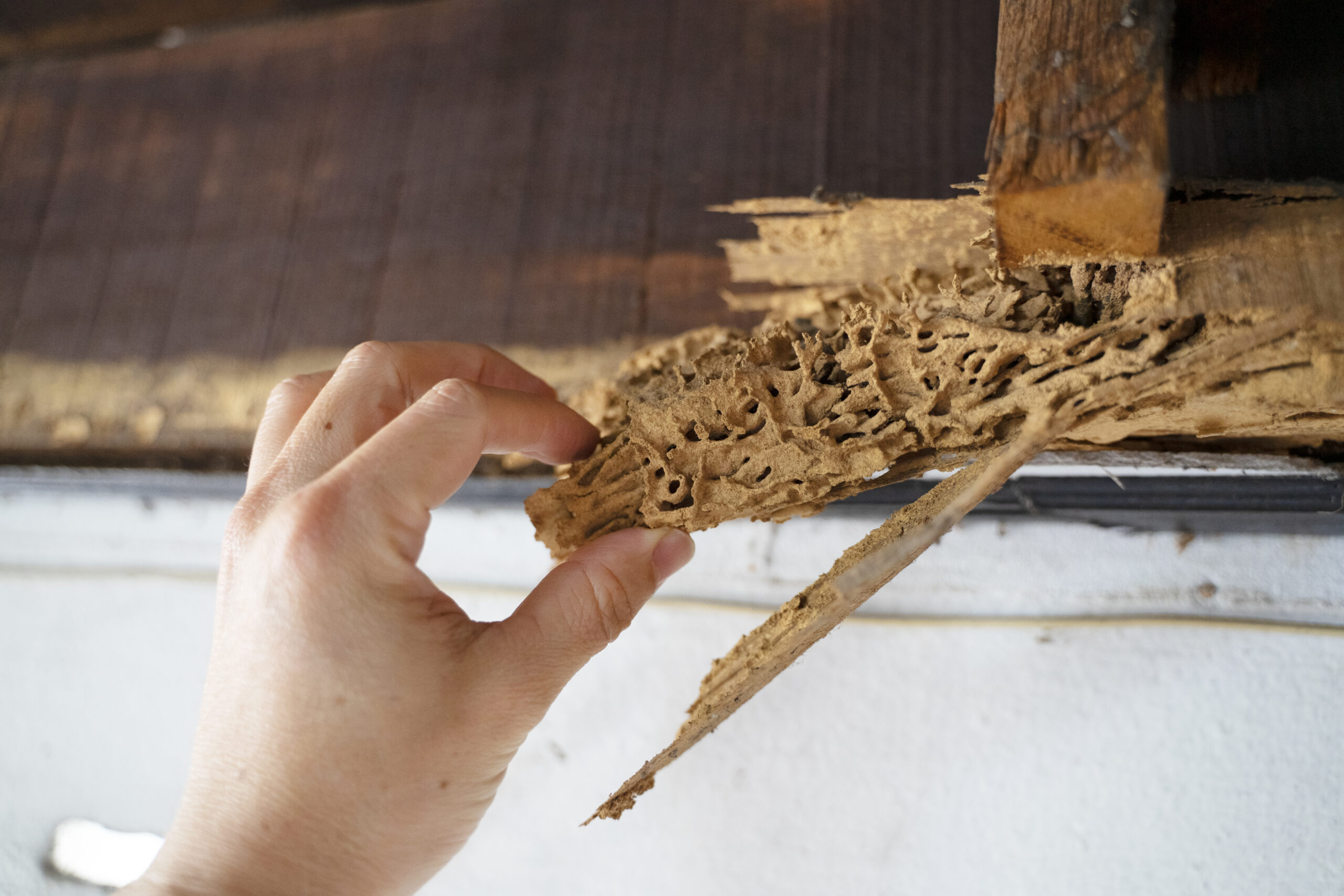
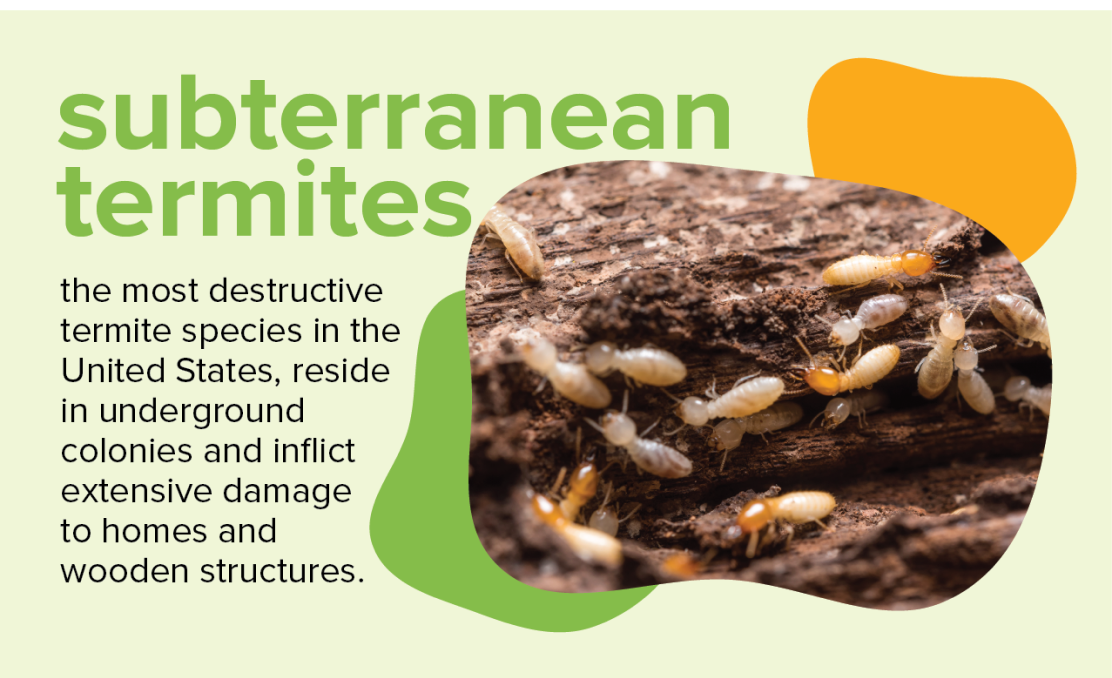
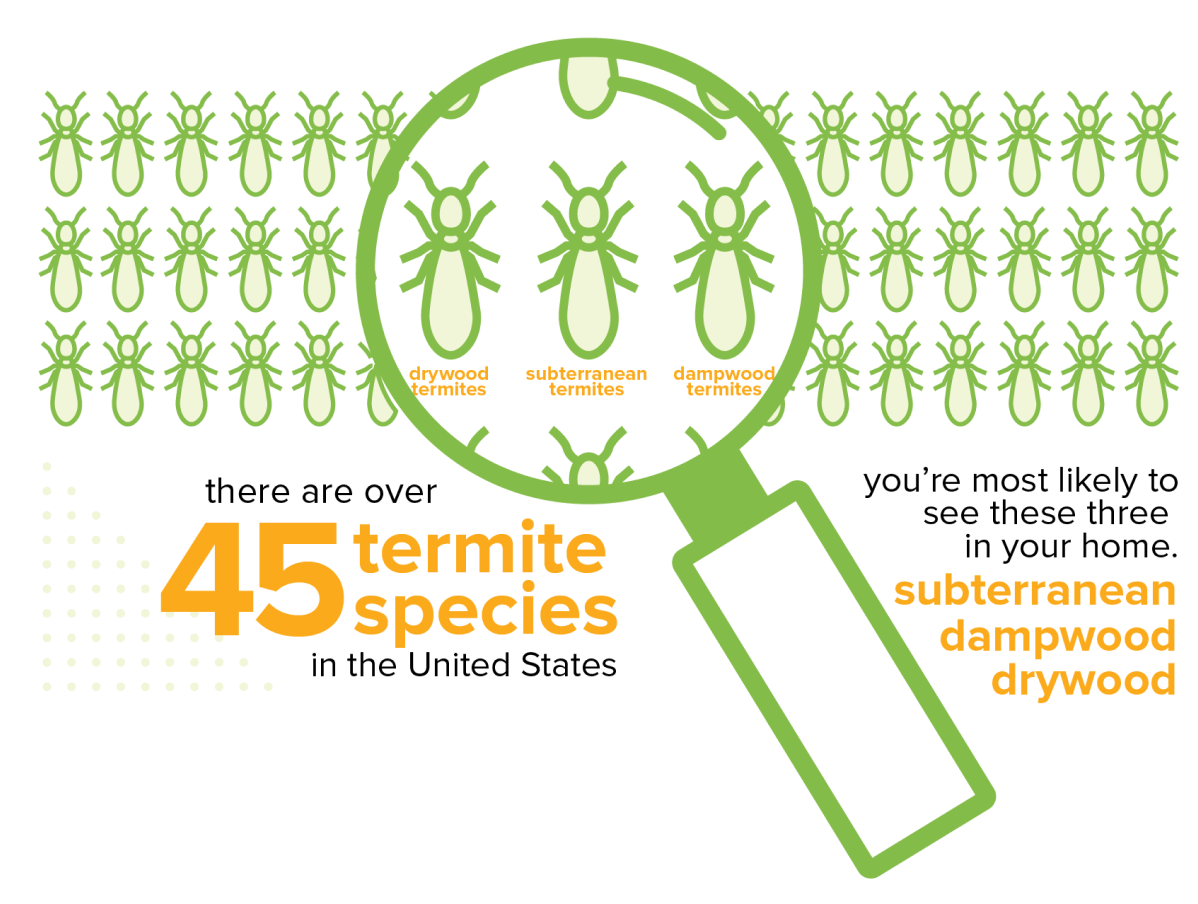


what do i need to know about termites?
Termites can cause significant damage to your home over time if they are left unchecked. Termites eat the wood (or other cellulose material like paper,
cardboard, etc.) of your home from the inside out. They are often hidden away behind walls and in dark areas. In fact, most termites don’t even have
eyes because they don’t need them in the dark! This means homeowners often don’t notice termite activity until significant damage has occurred.
Termites avoid light since they can become dehydrated quickly and even die from exposure to the elements. Once they get close to the exterior of a
section of wood, they stop eating and move on to eat the inside out of another section.
how much wood do termites eat?
The amount of wood consumed by termites depends on several factors such as the type of termite, the age of the colony, and the type and condition of the wood in your home.
A large colony of subterranean termites can include millions of workers and eat hundreds of pounds of wood per year.
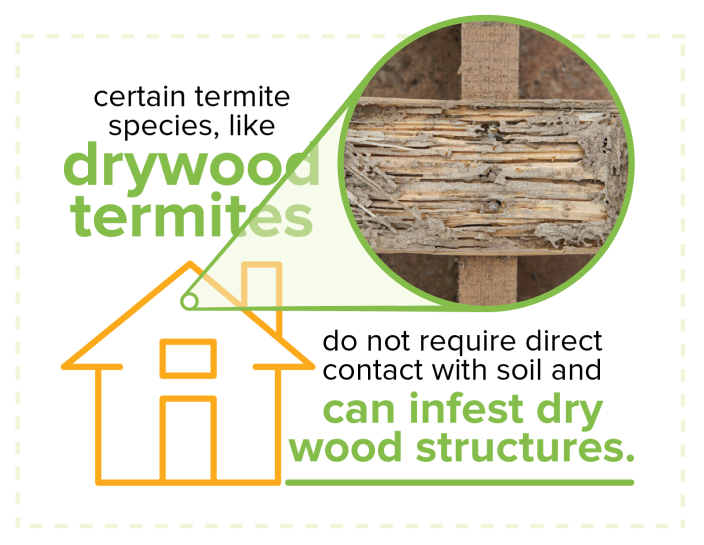
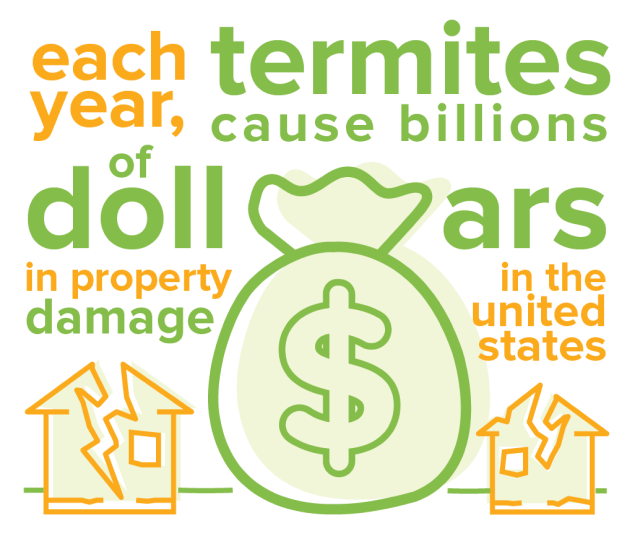
how much does termite damage cost?
According to the National Pest Management Association, every year the total cost of damage caused by termites in the United States is more than $5 billion (yes, with a “b”).
is my house at risk of termite infestation?
Most homes in the US are at some risk of infestation. There are several different kinds of termites in the United States. The most destructive by far are
subterranean termites. These termites live in large colonies that can grow to include millions of workers and eat hundreds of pounds of wood each
year. Most central and southern parts of the US are at risk of infestation from subterranean termites, as shown in the map below.

how do termites get into my house?
Subterranean termites can get into your home in two ways.
They enter your home:
- Above ground, by flying into it : When a termite colony is mature, it will produce winged, reproductive male and female termites. When conditions are right, the reproductive termites will fly away to find other reproductive termites to mate with and set up new colonies. If your home is nearby, a mated pair of reproductive termites may come across it and decide it’s a great place to start their new termite colony. If you’re really unlucky, multiple pairs of reproductive termites will set up their colonies in and around your home!
- Below ground, by tunneling up into it : Worker termites from existing colonies are constantly foraging to find new
food sources. When theyforage, they dig tunnels through the earth looking for sources of cellulose (wood).
If they come across your home, they may decide it’s a great source of food for their colony. Soon after, the colony’s
workers will start eating away at your home’s wood from the inside out!

signs of termites
Wood Damage: Termites feed on wood from the inside out, leaving behind hollowed-out or damaged wood. Look for sagging or buckling floors, hollow-sounding wood, or damaged wooden structures.
Mud Tubes: Subterranean termites build mud tubes as protective tunnels between their nests
and food sources. These pencil-thin tubes usually appear along walls, foundations, or
other surfaces around your home.
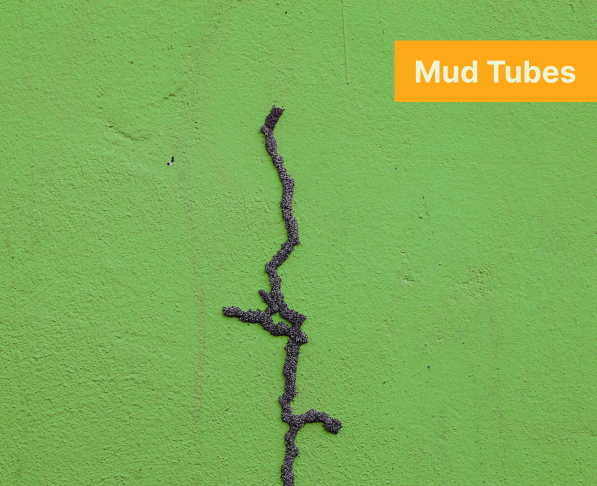
Discarded Wings: Reproductive termites, known as swarmers, shed their wings after finding a suitable location to establish a new colony. Finding discarded wings near window sills, doorways, or other entry points can indicate the presence of termites.
Frass (Termite Droppings): Drywood termites push out their excrement, known as frass, from small holes in infested wood. Keep an eye out for waste that resembles tiny pellets or sawdust beneath or near termite-infested areas.
Mud in Construction Joints: Termites may use mud to fill gaps and crevices in construction joints, like around pipes, utility lines, or foundation cracks.
Bubbling or Peeling Paint: Moisture from termites can cause paint to bubble or peel off surfaces. If you notice unusual paint damage or blistering, it could indicate termites hidden beneath the surface.
Clicking Sounds: In some cases, you may hear a clicking or tapping sound coming from termite-infested wood as soldier termites tap their heads against the structure for communication.
Don’t hesitate to contact proof. if you come across any of these telltale signs. We’ll thoroughly assess the situation and devise a plan to eliminate and prevent termites. Trust us to handle the challenge and provide you with peace of mind!
what does termite damage look like?
There are several things you can look out for that indicate you have termites in your home.
Upon discovering any of these signs, we recommend you give proof. pest control a call right away.
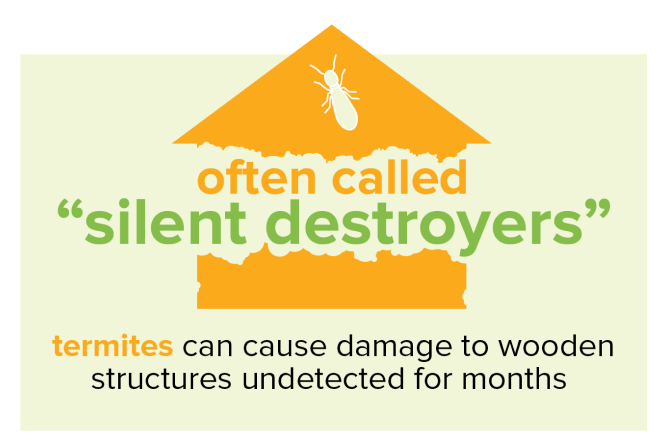
Signs of termite damage include:
- Hollowed-out, muddy wood: Subterranean termites live in the soil and go back and forth from their home to the wood in your home as they eat. Damaged wood will have tunnels, holes, or chambers eaten out of it, and often have dried mud on it that the termites brought with them.
- Mud tubes : Subterranean termites create telltale mud tubes to protect them as they go about eating your home’s wood. Common places to find mud termite tubes are around your home’s foundation, and on posts, pillars, or walls in your basement/crawlspace.
- Piles of wings or winged termites : Winged termites are reproductive males and females that swarm to find mates and set up new colonies. Once they find an ideal spot for a new colony, they will shed their wings and take up residence in their new underground home. Finding piles of wings or of winged termites is a bad sign – it means you either have mature termite colonies in and around your home or that termites are looking to set up new colonies.
give proof. pest control a call today!
We understand the discomfort associated with having any kind of pest infestation, which is why we do everything we can to make sure you are safe
and comfortable in your home. Our termite experts are able to effectively halt termites from destroying your home and give you peace of mind.
found termite damage?
call proof.!
When faced with a termite infestation, we suggest contacting a licensed pest control professional to determine the right approach for your unique circumstances. By choosing to partner with proof., you can experience true peace of mind. Our expert team will diligently assess the scope of the infestation and recommend an appropriate solution that will control and eliminate termites. Termite-free living is just a call away!
Take proactive steps today to protect your property from termites! Join the ranks of homeowners who safeguard their most valuable asset. Our exceptional termite treatment eliminates existing infestations and fortifies your property against future termite attacks. Invest in a reliable strategy for long-term peace of mind.
all the proof. you need
Michael did a great
job.
respectful of our home when doing the inside.”
– Tom A.
always goes above & beyond expectations.
He answers all my questions
and honestly.”
– Rae H.
Jon is professional, cordial & funny.
“He tempers his professional knowledge with humor to make future visits a welcome part of the month.”
– Tom A.
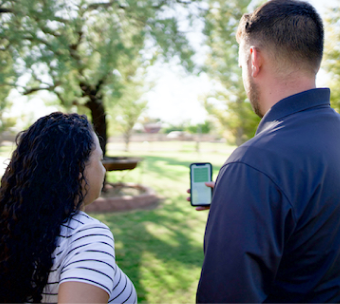
recommended reading
- 3 Early Warning Signs of Termites to Watch For
- Termite Frass | Signs of Destructive Termites!
the proof. team is ready to help
contact us
proof. keeps you in the loop!
read our pest tips & tricks
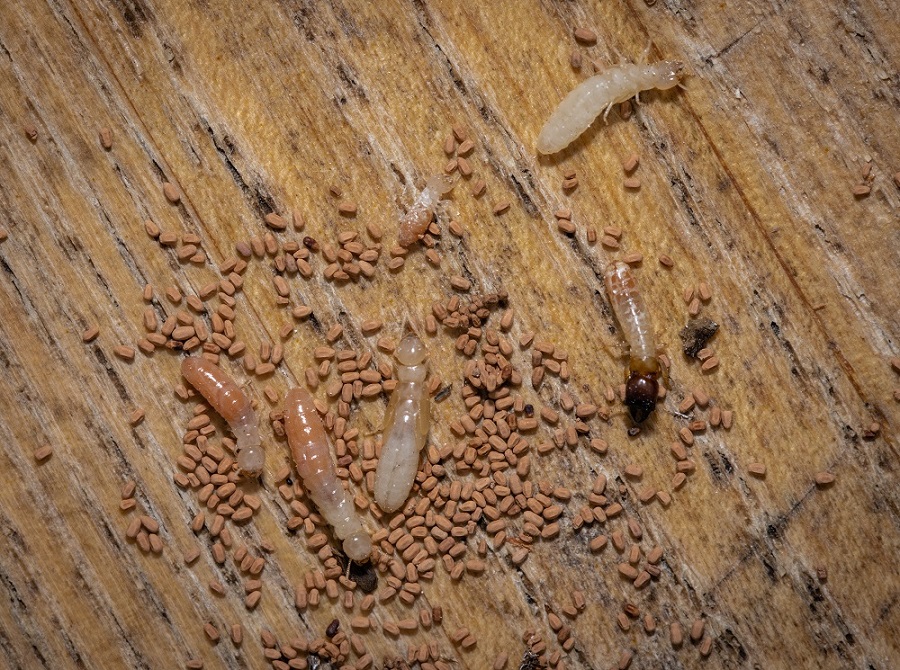
Termite Frass | Signs of Destructive Termites!
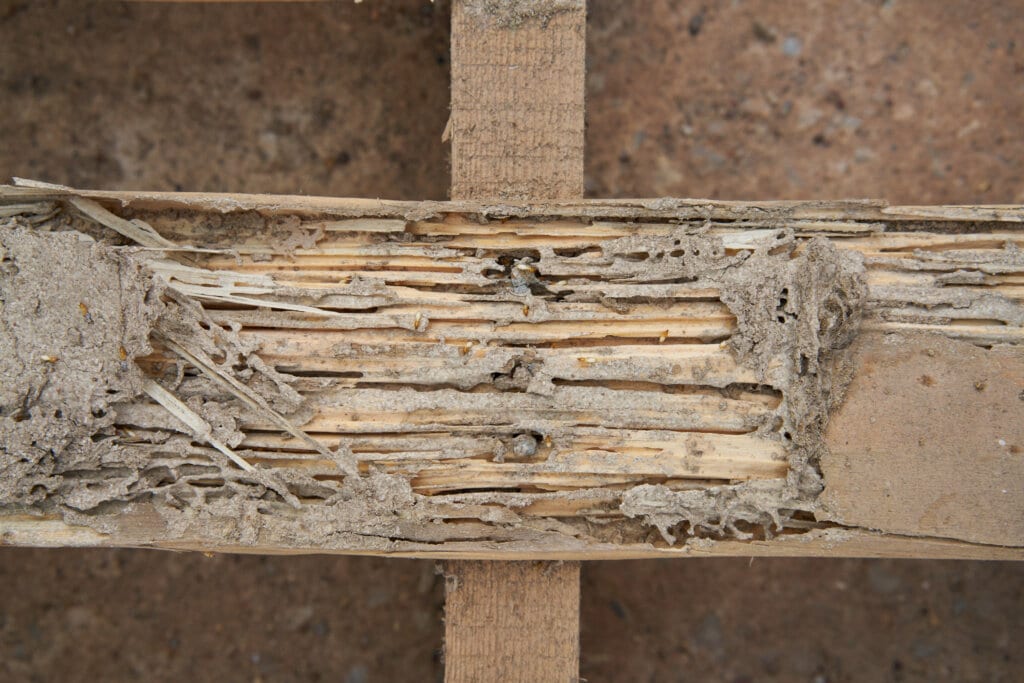
3 Early Warning Signs of Termites to Watch For



